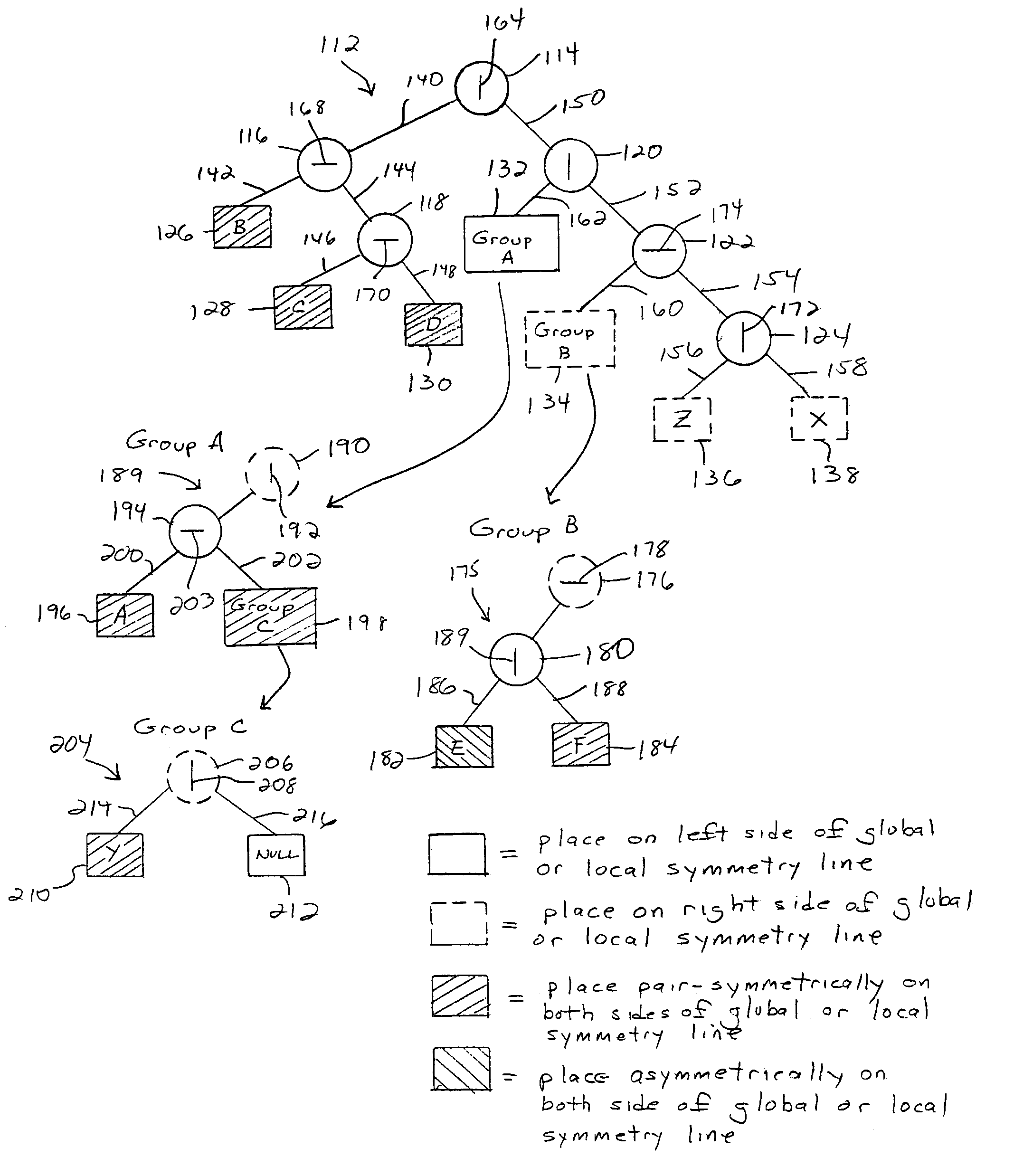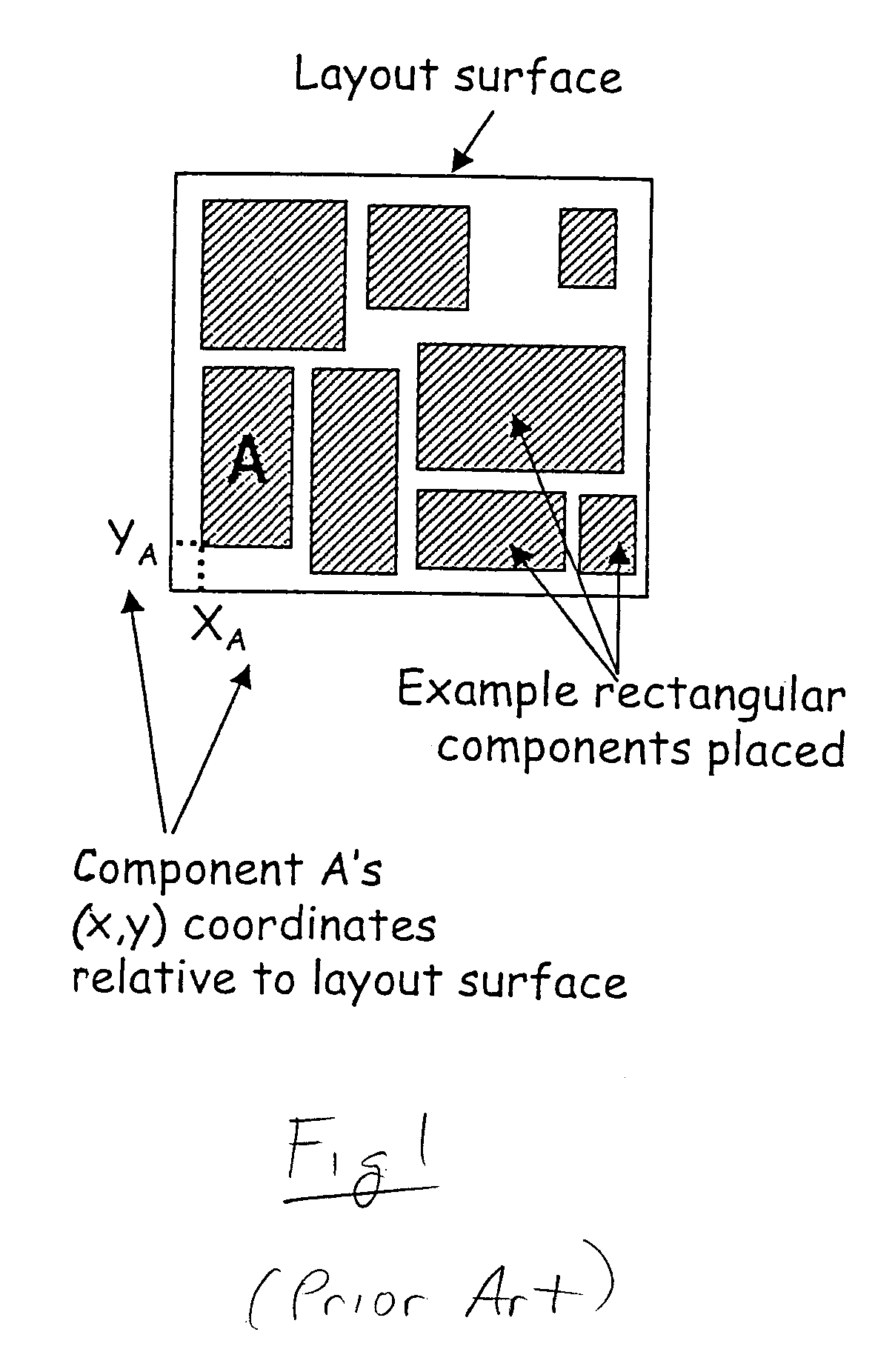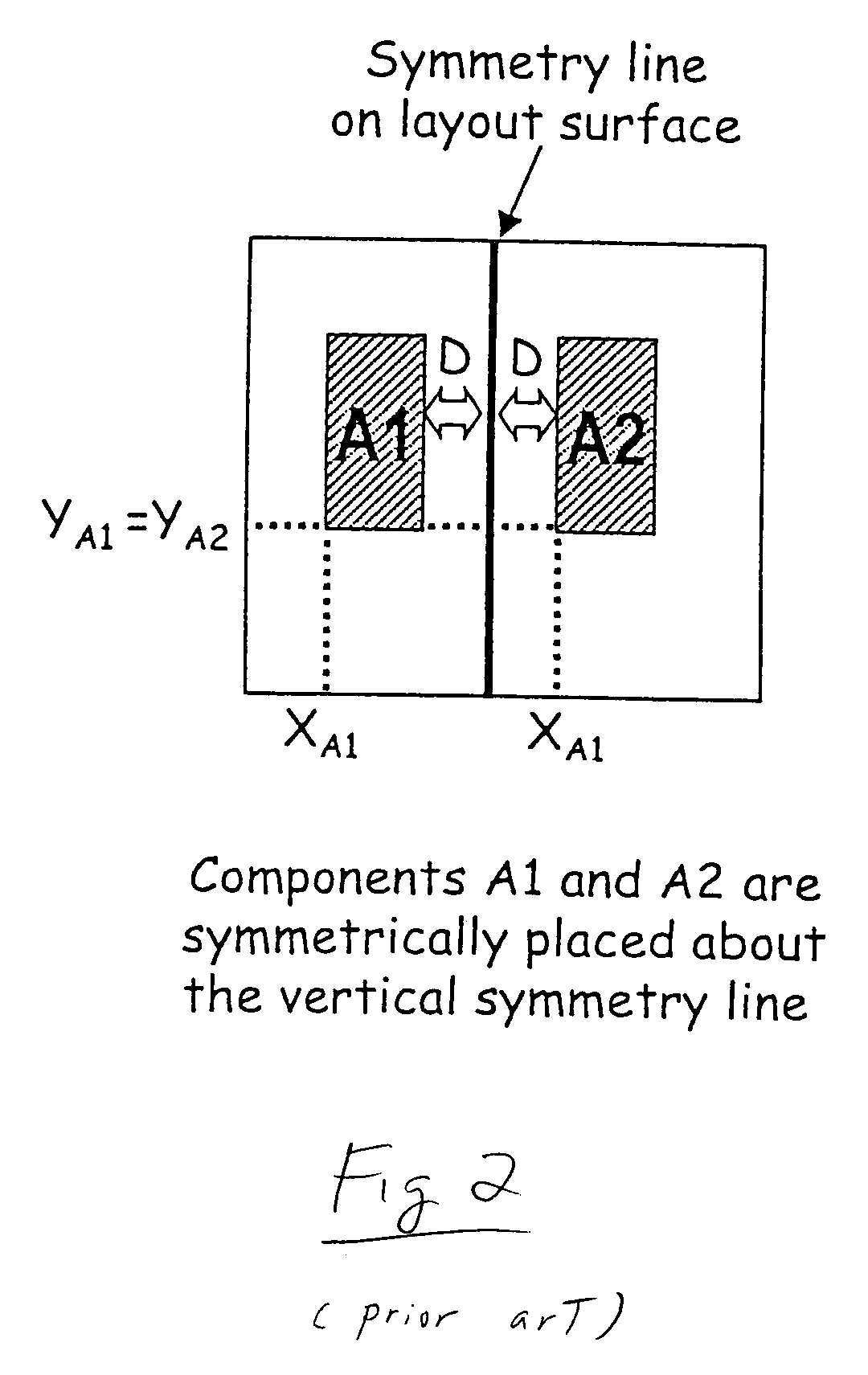Method for generating constrained component placement for integrated circuits and packages
a technology of integrated circuits and components, applied in the field of circuit design, can solve the problems of inability to meet the requirements of component placement, occupying too much area for economic manufacturing, and failing to meet the requirements of integrated circuit and electronic board/package design
- Summary
- Abstract
- Description
- Claims
- Application Information
AI Technical Summary
Benefits of technology
Problems solved by technology
Method used
Image
Examples
Embodiment Construction
[0113]The present invention will be described with reference to the accompanying figures where like nomenclature refer to like elements. Moreover, the terms left, right, top, bottom, horizontal, vertical and the like are used with reference to the accompanying figures and are not to be construed as limiting the invention.
[0114]The present invention is embodied in computer readable program code that executes on a processor of a stand-alone or networked computer or workstation that includes a processor, computer storage, an input / output system, a media drive, such as a disk drive, CD ROM drive, etc., and a computer-useable storage medium capable of storing the computer software that embodies the present invention. Under the control of the computer readable program code, the processor is capable of configuring and operating the computer system in a manner to implement the present invention. Computer systems of the type described above are well known in the art and have not been describ...
PUM
 Login to View More
Login to View More Abstract
Description
Claims
Application Information
 Login to View More
Login to View More - R&D
- Intellectual Property
- Life Sciences
- Materials
- Tech Scout
- Unparalleled Data Quality
- Higher Quality Content
- 60% Fewer Hallucinations
Browse by: Latest US Patents, China's latest patents, Technical Efficacy Thesaurus, Application Domain, Technology Topic, Popular Technical Reports.
© 2025 PatSnap. All rights reserved.Legal|Privacy policy|Modern Slavery Act Transparency Statement|Sitemap|About US| Contact US: help@patsnap.com



